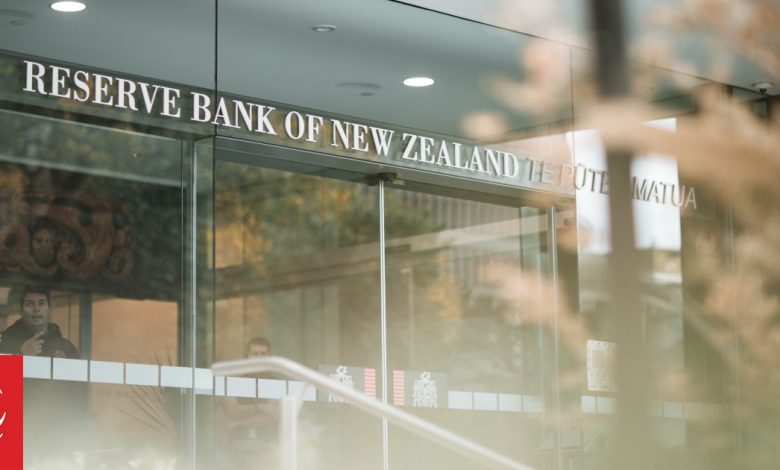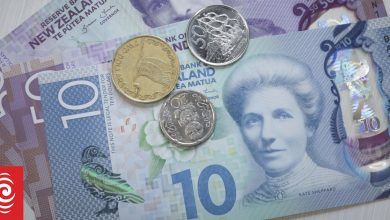Why one word from Reserve Bank could make all the difference

Analysis – The Reserve Bank will update the official cash rate (OCR) on Wednesday.
While the chance of a move from the current 5.5 percent rate is seen as negligible, economists say there will be other things in the bank’s statement that they’ll be looking at, to get a sense of what might lie ahead.
Here’s what will grab their attention, and why.
The OCR track
Lots of economists will go straight to the official cash rate track when the Reserve Bank releases its update.
This shows where the bank expects the OCR to go over the next few years.
In the bank’s last full update, in February, the track had the rate peaking at 5.59 percent, before easing in 2025 and through into 2026.
The Reserve Bank tends to only move the OCR in 25 basis point jumps, so that peak indicated that the bank thought there was a chance it could still need to hike the rate again.
“The OCR track, there’s two parts to that – what the peak is and when cuts are implied,” ANZ chief economist Sharon Zollner said. “The markets will be very interested in both.”
The 5.59 percent peak currently priced in was a reduction from the 5.69 percent forecast in November. “The market is expecting it’s going to be lowered again,” she said.
Zollner said a lower peak would be a “hat tip” from the Reserve Bank that hikes were now a lot less likely.
“Some offshore people think they will signal they will cut sooner but we don’t think they will particularly want to send that message.”
The bank would be wary about giving cause for market pricing, and retail rates, to get ahead of themselves, she said.
“The market is already pricing cuts a lot sooner than the Reserve Bank is forecasting. They’ve got a 50 percent chance of a cut as soon as August, a full cut by October pretty much and two cuts by November. We don’t think the Reserve Bank will be particularly wanting to green light any more aggressive pricing of cuts.”
Kiwibank chief economist Jarrod Kerr said he did not think the track would change a lot but he would like to see that chance of a hike removed. “They’ve got nine basis points of a rate hike priced in there. I imagine they could shave that off simply because it’s not needed any more.”
He said he would also be interested in where the track showed rates starting to fall.
Westpac chief economist Kelly Eckhold said the Reserve Bank had previously been “pretty conservative” about the timing of rate cuts.
“[Last update it] thought it might be more like May next year before they would start reducing interest rates. The market is keen to see if that view has changed.”
Forecasts
Economists will also look at the bank’s economic forecasts, particularly for inflation.
ASB economist Kim Mundy said April was one of the shortest monetary policy statements ever seen – “the information content of that statement was pretty limited. We’ll definitely get a bit of a better insight into the Reserve Bank’s thinking when a statement is provided alongside updated forecasts.”
The CPI would be the most important of the Reserve Bank’s predictions, she said.
It was likely that the bank would have to increase its starting point for its forecast because first-quarter data came in a little higher than it expected.
“That will mechanically push up where their inflation track starts. Ultimately we think inflation is trending back to that 2 percent level by mid next year… but there was quite a sizeable upside surprise on non-tradeable inflation in the first quarter, which caught everyone off guard.”
Mundy said the fact it was domestic inflation, which the Reserve Bank should be able to influence, that had been tricky and could be a concern to the bank.
“We’ll have to see how that track falls away over time. We do still think they’ll show non-tradeable inflation falling because the economy is not in a particularly good place. Weaker demand should translate into lower non-tradeable inflation. It’s just a matter of when we see that materially come off.”
Kerr said he would be interested in how the bank was interpreting developments in inflation and unemployment.
He said his team had been more dovish – keen to see rates coming down in the face of weakening economic conditions – than the Reserve Bank, which was still quite concerned about the outlook for domestic inflation.
NZ Council of Trade Unions economist and policy director Craig Renney said inflation expectations and the Reserve Bank’s view of those would be important.
“That’s often a good indicator of whether inflation is going to come down.”
He said he would also be interested to see whether the bank’s new single mandate was “expressing itself”. The first bill passed by the new government was to return the Reserve Bank to a single mandate of maintaining price stability, removing the need for it to also support maximum sustainable employment.
“If we see all the indicators of employment, GDP and everything else heading in the wrong direction but the Reserve Bank is not doing anything because inflation is doing something, we’re probably using the wrong tool to tackle that inflation problem and the cure is worse than the disease. That will be an expression of the single mandate.”
‘Sustained’
Zollner said whether the bank referred to interest rates needing to remain at a restrictive level for a “sustained” period of time would be important. That has been part of the bank’s commentary for some time now and Zollner said any change to that wording would be seen as significant.
“The market puts a lot of focus on the word ‘sustained’. If that were to change, even if they published an identical OCR track, the market would view it as a dovish pivot.”
According to the news on Radio New Zealand




